As we enter the new year of this disruptive decade, it’s never been more important for Procurement to stay proactive and prepare for the future. After navigating the COVID-19 crisis, Procurement, Sourcing, and Supply Chain teams have continued to face new challenges — with geopolitical conflicts, rising costs, the effects of climate change, new regulations and consumer demands, talent gaps, and more.
2024 has already started with the greatest supply chain disruptions since the early pandemic, as Houthi attacks in the Red Sea shut down the Suez Canal and forced global supply chains to reroute around Africa. And considering that 2024 will be the biggest political year in global history, with elections in over 60 countries including the U.S., it’s unlikely that the turbulence of the 2020s will slow down this year.
But as we said last year, crisis can also act as the catalyst for positive change. And Procurement has the opportunity to turn these troubles into unprecedented transformation that redefines its role and the value that it delivers across the triple bottom-line of Profit, People, and the Planet.
Looking back at 2023's key trends
So before we look forward at the trends, challenges, and opportunities that will shape Procurement in 2024 and beyond, let’s look back at a few of last year’s trends that brought us to today.
The adoption of advanced analytics:
While Procurement still has a lot of room for progress with its digitalization, 2023 was a promising year of increased adoption of new technology and tools that empower Procurement with advanced analytics. Thankfully, more and more teams are trading their spreadsheets and scattered data silos for automated solutions that harness the power of their supply chain data and transform it into powerful insights and intelligence.
Kodiak Hub is proud to be contributing to this transformation with the advanced analytics of our Supplier Relationship Management system, which was recently named a ProcureTech 100 pioneering digital solution for the second year in a row.
The true cost of high costs:Last year, we predicted that Sustainability would come back front and center in 2023 after the disruptions of the pandemic had distracted from it in the years prior. Unfortunately, 2023 became a year where inflation and high costs once again pulled Procurement’s focus away from sustainable transformation.
While many businesses have made great strides in their sustainability initiatives, last year’s economic turbulence had Procurement teams tied up with cost management rather than proactively driving innovation and impact throughout their supply chains. But as 2030 inches closer every day, we can’t afford to deprioritize Sustainability any longer and Procurement will need to fight for it as a driving force of their sourcing strategies in 2024 and beyond.
Supply chain resilience & agility:After making it to the other side of the global pandemic and earning a seat at the table, Procurement used 2023 as a year to improve the resilience and agility of their supply chains. Investing in People, Processes, and Technology, Procurement improved the capability of their supply chains to react to rapidly changing situations and to recover from business interruption events, while also leveraging real-time data for better supply and demand forecasting, more accurate inventory management, and closer relationships with suppliers. And given the supply chain disruptions at the end of 2023 and beginning of 2024, it’s safe to say that these were wise investments for Procurement to make.
 Top 13 Procurement Trends in 2024
Top 13 Procurement Trends in 2024
Without further ado, let's dive into this year's most popular Procurement trends! You can continue reading below, or watch the webinar hosted by Kodiak Hub's Chief Revenue Officer Sam Jenks:
1) GenAI
Alright, let’s just get this one out of the way… The hype around GenAI has been virtually impossible to miss in recent months - not just in Procurement but in pretty much every industry.
But that’s for good reason. Unlike other previously buzzed-about technologies that didn’t live up to the hype like Blockchain, it seems inevitable that AI and GenAI will be increasingly embedded into our lives in the coming years. The global Artificial Intelligence market was valued at $177 billion USD in 2023, and it’s estimated to reach $2.75 trillion USD by 2032.
Before discussing GenAI in Procurement, it’s important to understand the distinction between “traditional” AI and GenAI:
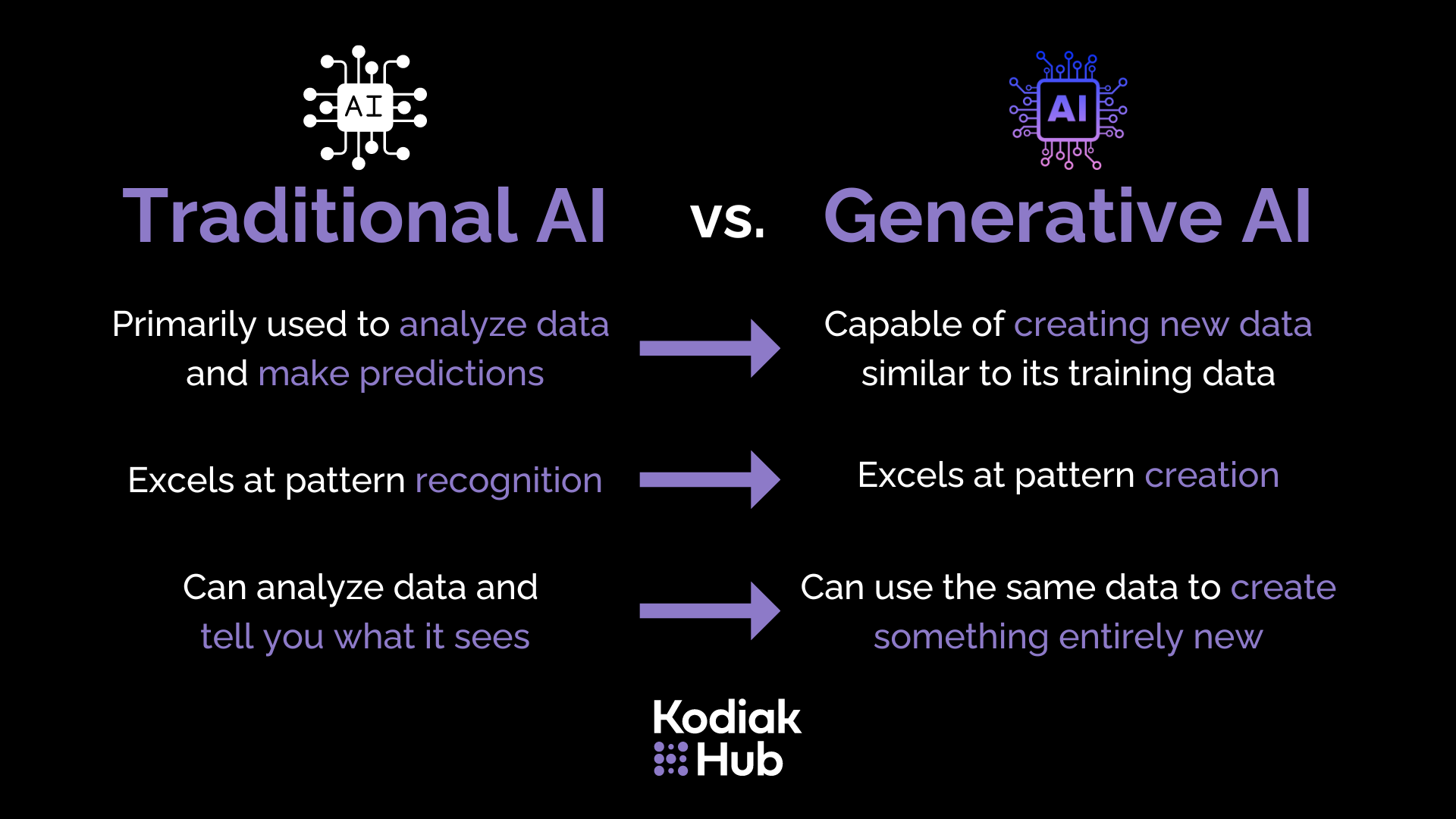
In Procurement, GenAI adoption isn’t so much a question of “if” but rather “how?” While its incredible potential is undeniable, Procurement is still figuring out how to smartly and safely utilize this transformational tech. According to Amazon’s 2024 State of Procurement Report, “Just under half (45%) of respondents would be willing to incorporate AI into their procurement efforts immediately or within a year – however 80% would be willing to do so within 2 years.” So GenAI is coming, but Procurement just needs a little bit more time for some well-justified due diligence and development of its best use cases.
At Kodiak Hub, we’re currently exploring the potential for GenAI in our Supplier Relationship Management platform, from automating mundane tasks to generating content that enhances supplier engagement and optimizes Buyer-Supplier collaboration. For instance, leveraging GenAI to generate content and communications for Suppliers in our Onboarding, Self-Assessment, and Actions tools. Or enabling further automation of SRM tasks with a simple GenAI prompt.
Buzzword or not – GenAI is an essential trend to keep an eye as it seems that it will inevitably transform the world, with Procurement being no exception.
2) "CPO" redefined
As the function of Procurement and its importance to organizations continues to evolve, so is the role of the CPO. In 2024, CPOs are becoming so much more than “Procurement Officers.” Here are the 3 key definitions of “CPO” that we see in 2024:
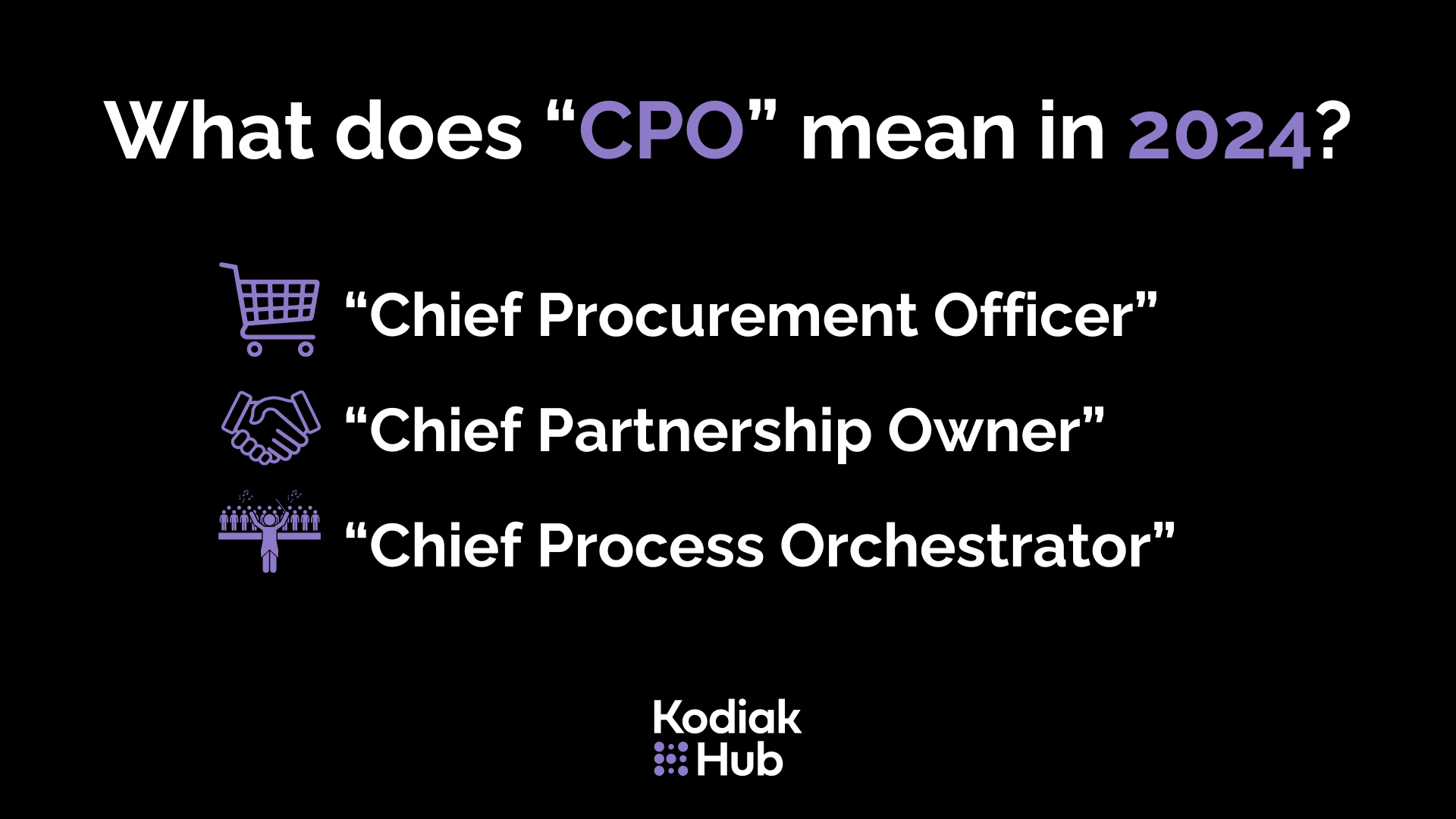
- Chief Procurement Officer: The classic meaning of "CPO." Someone who is leading a Procurement organization and navigating its traditional responsibilities of cost & risk management, along with the new challenges of climate change and driving sustainable transformation throughout their global supply chains.
- Chief Partnership Owner: A more modern definition of "CPO." A Procurement leader who knows that strong partnerships – both externally with suppliers and internally with stakeholders – are the key to smarter strategic sourcing. They act as a knowledge broker, creating value from stronger and more efficient collaborations both inside and outside of the organization.
- Chief Process Orchestrator: Another more recent definition of "CPO." A Procurement leader who drives value by getting stakeholders and supplier all playing the same "score." With smart procurement workflows and process automation, they break silos, reduce cycle times, and engage with suppliers more efficiently to drive predictability, performance, and purpose in their supply chains.
In 2024, Procurement leaders have the unique opportunity to own partnerships and the orchestration of value throughout the broader value chain. But whichever role you have within your Procurement organization, it’s important to recognize the power that you hold!
3) Orchestrating value
To dive deeper into the new meanings of “CPO,” the concept of Process Orchestration has taken the digital Procurement world by storm in recent months. To face new challenges and seize opportunities, Procurement must now act as “orchestrators” that get suppliers and stakeholders all “playing the same score” to drive efficiency and unlock value.
“The secret to orchestration is to establish smart procurement workflows, essentially using process automation to break silos, reduce cycle times and onboard and engage with suppliers more efficiently,” explains Sudhir Bojwhani of ORO Labs. “Moreover, orchestrated workflows increase visibility for finance teams into spending and commitments and help organizations scale their operations to meet legal, compliance, finance and other regulatory requirements more swiftly.”
But orchestration in Procurement is easier said than done, as managing a global supply chain entails an ocean of data. For every supplier, a Procurement team could hold hundreds, if not thousands, of data points in their systems. Multiply that by a few hundred or thousand suppliers: you have a critical mass of data that requires structure, framework, tools, and processes that control and enhance the flow of information.
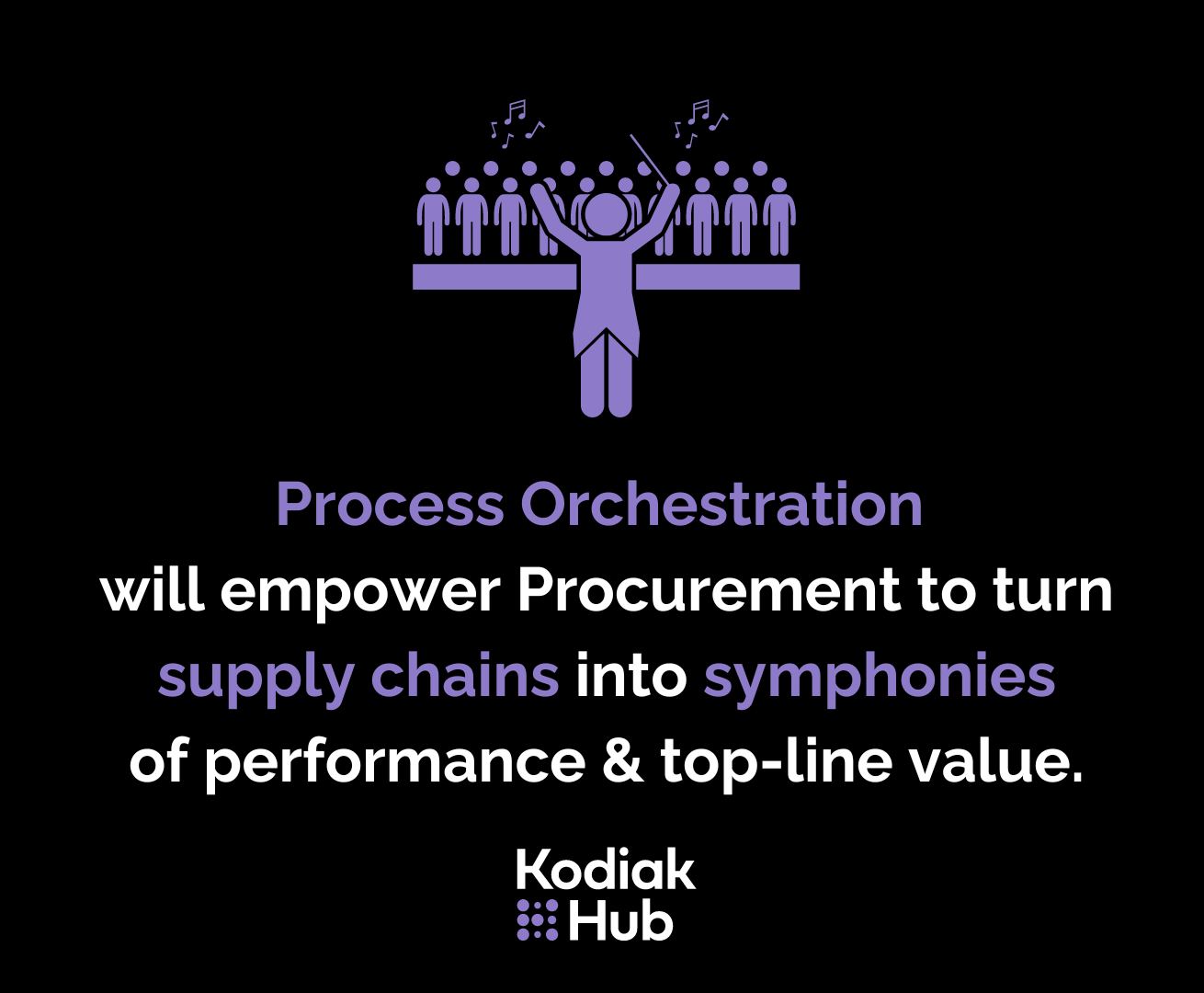
Kodiak Hub is proud to be facilitating orchestration by reducing the complexity of supplier management with our innovative SRM platform, streamlining all stages of the supplier lifecycle — from onboarding, qualification, and approval to risk and performance monitoring and improved collaboration.
Applying technology like Kodiak Hub’s process orchestration tools, on top of legacy ERP & S2P solutions, enables more nimble workflows that can turn a cacophony of supplier data and approval chains into a harmonious symphony of orchestrated value. So every Procurement team should be aiming to become orchestrators in 2024.
4) From blue suits to blue jeans
As Procurement faces new challenges, it’s also adopting a whole new swag. What was traditionally an industry that was seen as boring, corporate, and dominated by “white men in blue suits” is now becoming a younger, more diverse, and more casual crowd that rocks blue jeans.
We saw this firsthand last October at the amazing DPW event in Amsterdam, which encouraged attendees to dress “startup casual” and don sneakers over dress shoes.

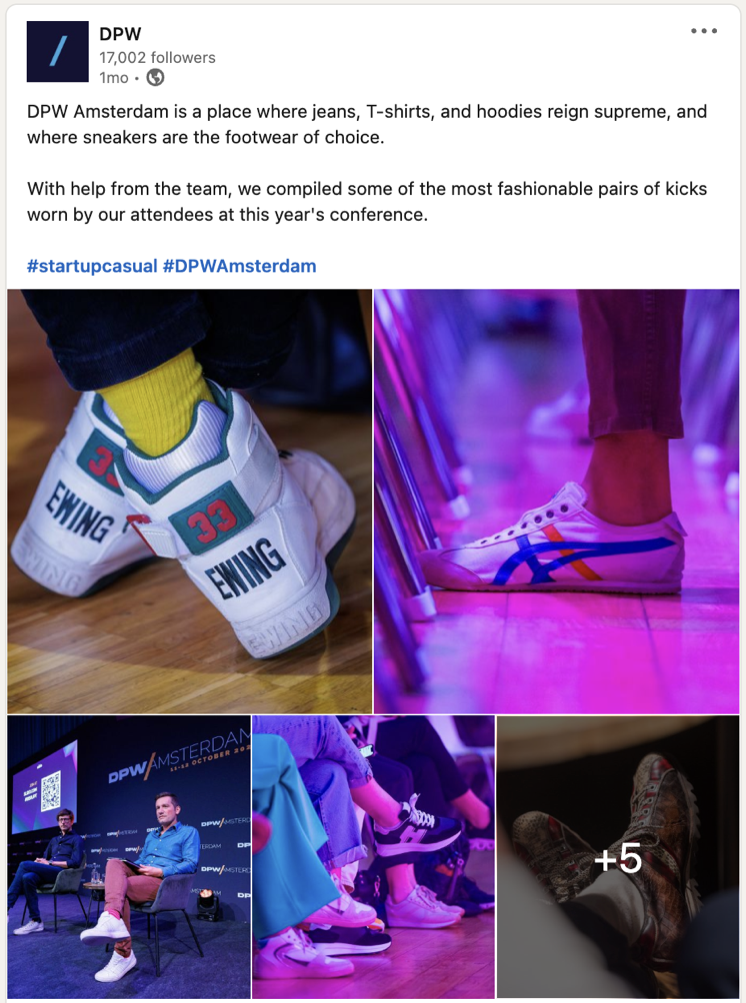
And admittedly the Kodiak Hub team took full advantage of this new dress code with our own stylish spin on contemporary Procurement:

Procurement is in transition, both aesthetically and professionally. From blue suits to blue jeans. From cost-saver to value-creator. It’s exciting to be in this new era and see how a new generation of Procurement leaders is transforming every aspect of the industry.
5) Crisis of confidence – Talent
The ongoing evolution of Procurement is also posing serious challenges. While 2024 is full of incredible opportunities, there is a great need for upskilling, reskilling, and attracting new talent for Procurement teams to stand the test of time.
A recent Gartner survey from June 2023 showed that “only 14% of Procurement leaders agree they have adequate talent to meet future requirements of the Procurement function.” A shocking statistic that shows how Procurement is facing a serious crisis of confidence when it comes to talent.
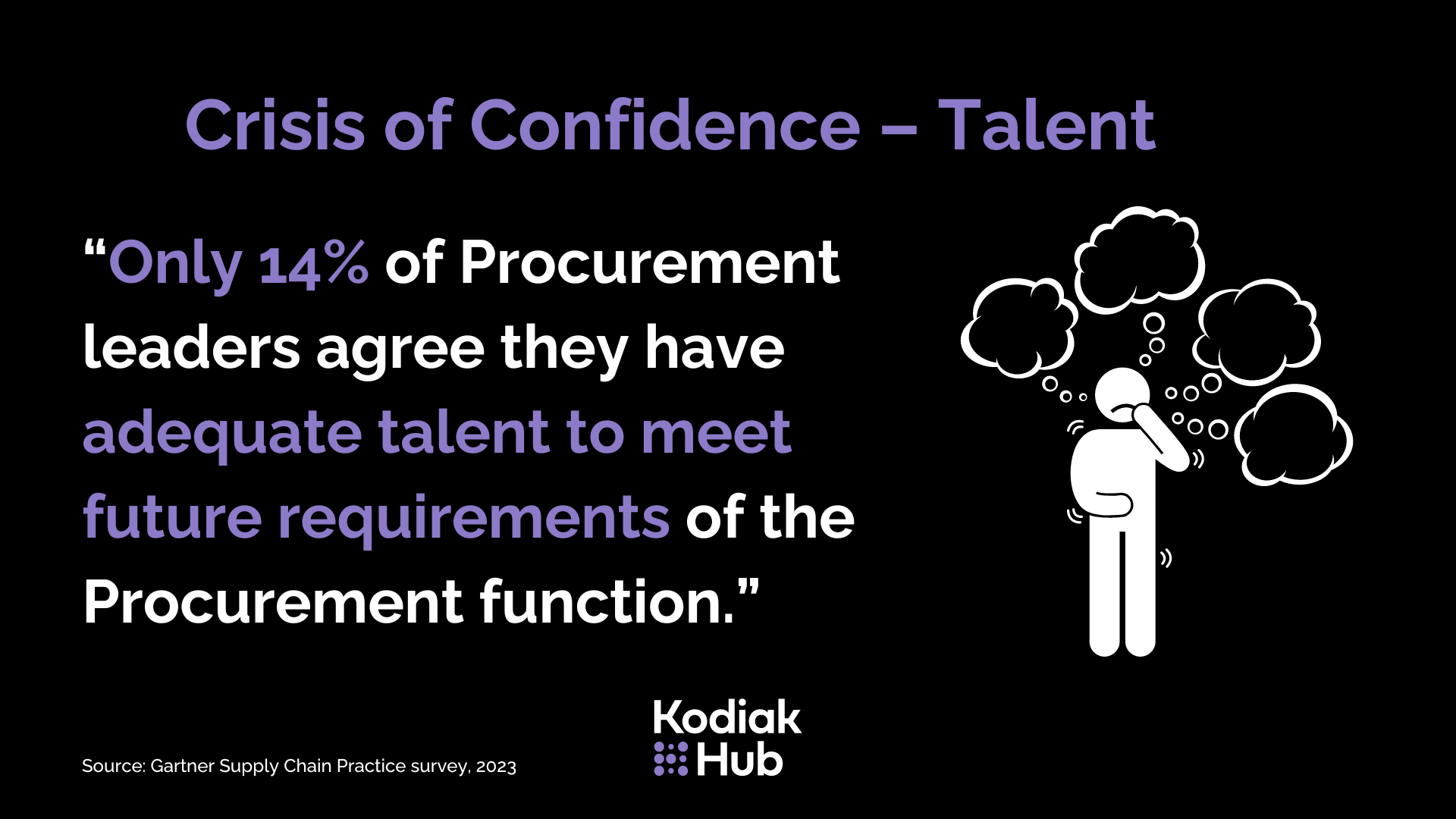
Further, Amazon Business’s 2024 State of Procurement Report listed the Top 2 Priorities facing Procurement for the next one to two years: “#1 Retaining and developing existing talent (86%) #2 Attracting or hiring top new talent (84%).”
Figures like these show just how much the old rules of Procurement don’t apply anymore. In the coming years, Procurement will put an increased focus on internal development programs and aligning new hires with the future needs of the business — allowing for improved digital transformation and sustainability efforts, while also ensuring that new talent has “traditional procurement skills” to manage supplier relationships and negotiations.
6) Crisis of confidence – Sustainability
Sustainability is another area where Procurement is unfortunately feeling a bit vulnerable.
Many businesses have made the wise choice of integrating their sustainability efforts into their Supply Chain and Procurement functions, understanding that 90% of emissions (on average) can be attributed to Scope 3 emissions from their suppliers.
Unfortunately, the pandemic, rising costs, and geopolitical disruptions of the past few years have taken focus away from already difficult sustainability targets. But 2024 will serve up a reality check to many businesses, as new ESG regulations come into effect. Along with the harsh realization that those ambitious 2030 targets and only 6 years away and starting to feel more like marketing campaigns than truly impactful initiatives.
As Kodiak Hub’s Founder & CEO Malin Schmidt puts it, there needs to be a true shift “from Reports to Results.” While “ESG reports are essential to bring attention to one of the most pressing issues of our time […] they don’t mean much unless they lead to change and real-world results.”
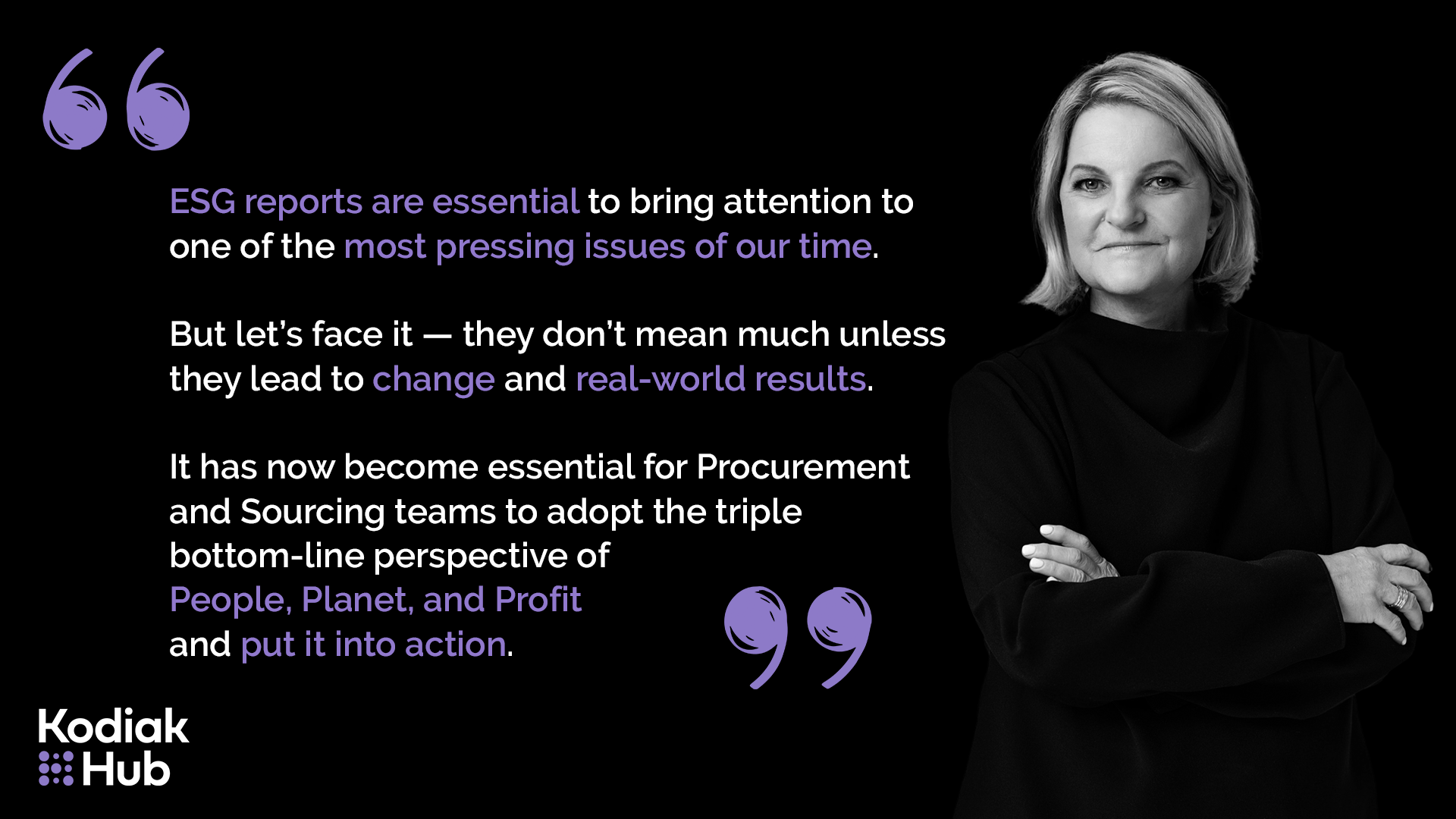
Hopefully 2024 becomes the year that Procurement leverages new technologies and talent to truly adopt the triple bottom-line perspective of People, Planet, and Profit and put it into action.
7) Paying the premium
When it comes to driving sustainable transformation, businesses and consumers alike are still have trouble putting their money where their mouth is. According to a 2023 NielsenIQ & McKinsey survey, “78% of US consumers say that a sustainable lifestyle is important to them.” However, CPG executives also reported that “one challenge to their companies’ environmental, social, and governance (ESG) initiatives is the inability to generate sufficient consumer demand for sustainable products.”
Sustainability is costly – and the world is still figuring out who should pay the premium. Businesses or consumers? The answer is both, but it’s been tricky to strike the right balance of how to divide the Sustainability tab.
Encouragingly, NielsenIQ and McKinsey also found that “Products making ESG-related claims averaged 28% cumulative growth over the past five-year period, versus 20% for products that made no such claims.”
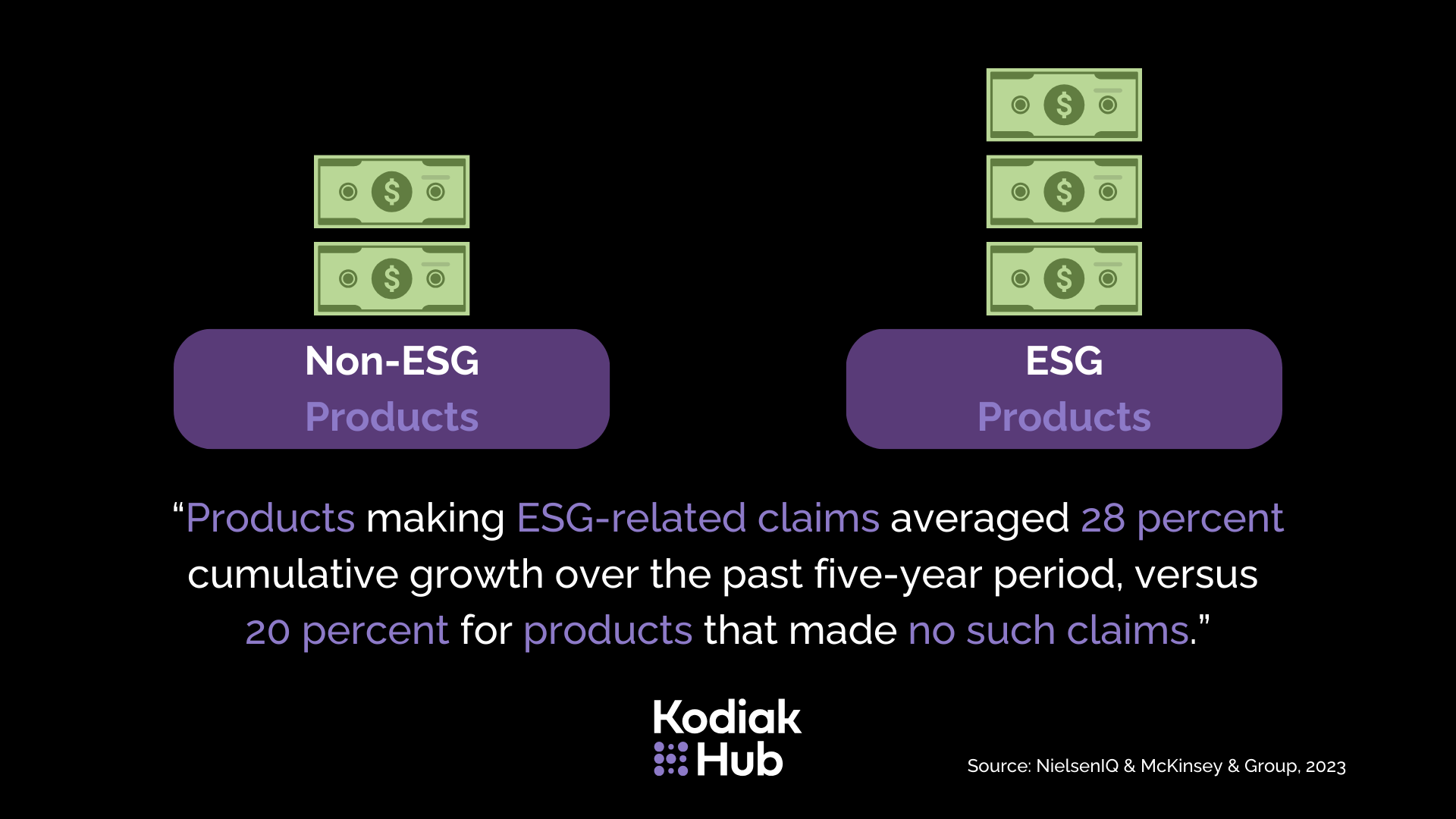
So consumers are proving that they want more sustainable and responsible products and are willing to pay the premium. But businesses will also need to be willing to sacrifice short-term profits and invest in long-term development and improved collaboration with their suppliers in order to keep pushing this trend in the right direction.
8) Tier-mapping & visibility
A top trend of the past several years, Tier-Mapping and Visibility remains on the tip of everyone’s tongue going into 2024. And for good reason – improving the transparency and traceability of complex global supply chains is no easy task. But it’s an essential one for Procurement to face two of its top priorities: Supply Chain Resilience and Carbon Emission Reduction.
Thankfully, Procurement is slowly but surely making progress with their Tier Visibility. A 2022 McKinsey & Company survey showed that “39% of companies reported that they have visibility of their Tier-2 Suppliers compares to 21% the year before. For Tier-3 Suppliers, the increase went from 2% reporting visibility to 11% during 2022.” And these numbers have certainly gone up during 2023.
To truly drive sustainable impact, Procurement will need to continue improving their Tier-Mapping and Visibility in 2024, as “Suppliers beyond Tier 1 represent 64% of total upstream emissions” (Accenture, 2023).
Nevertheless, it’s important to keep in mind that “Tier-n starts with Tier 1.” And Kodiak Hub is proud to be helping businesses to improve their collaboration with Tier 1 suppliers to gain enhanced transparency and traceability of Tier-n suppliers and work towards reducing Scope 3 emissions.
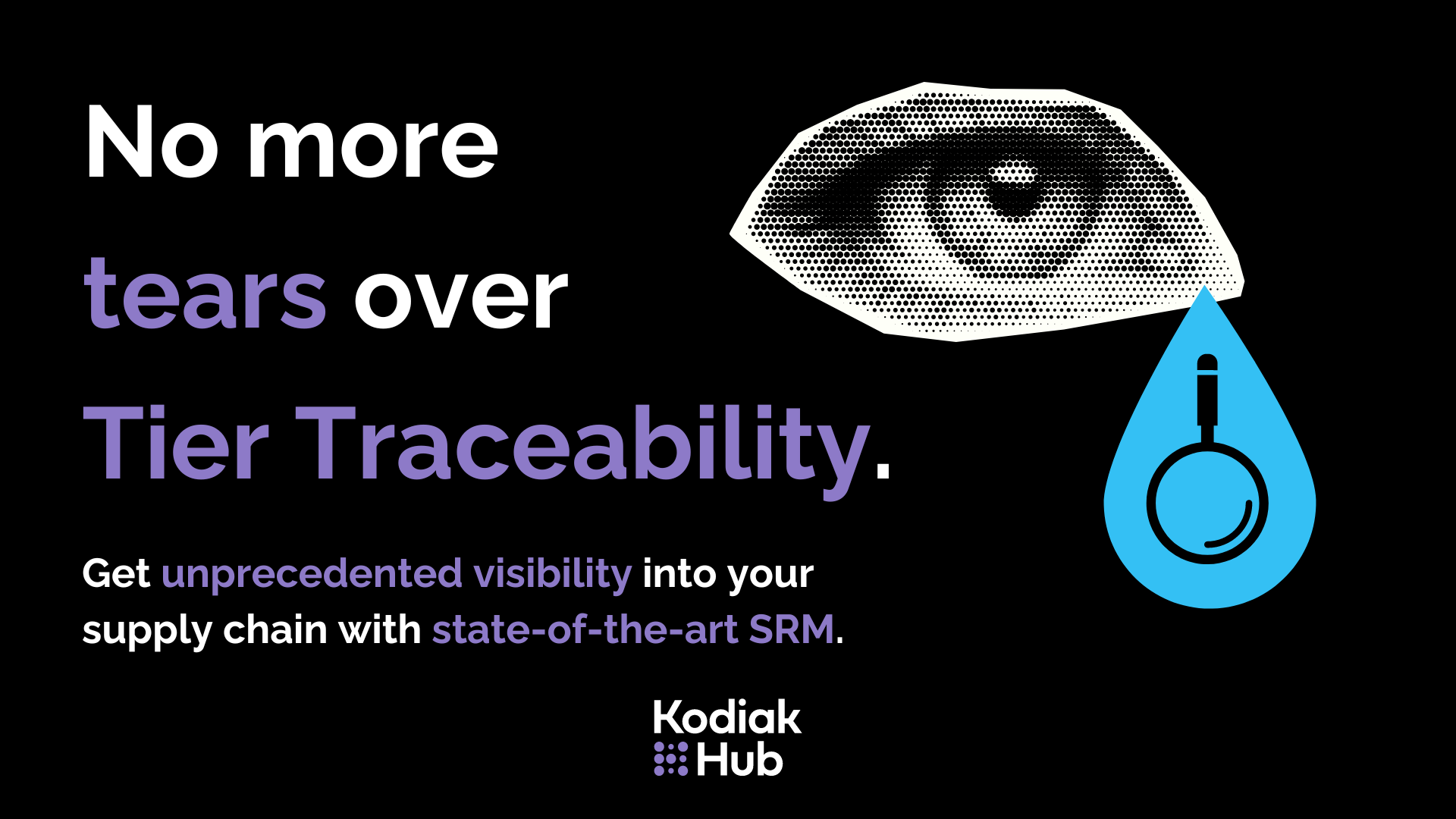
Which leads us to our next trend…
9) Supplier Relationship Management
Admittedly, we might be a bit biased about this trend, being ProcureTech pioneers in the SRM space. But in order to tackle new challenges and trends, the increasing importance of strong Supplier Relationship Management is undeniable.
A 2023 PWC survey found that SRM was “the 2nd most important strategic priority of Procurement departments.” And Deloitte’s 2023 CPO Survey reported that “61% of CPOs said that increasing their level of supplier collaboration was their top strategy to deliver the most value.”
Further, a 2023 report from State of Flux found that “97% of respondents said that supplier should be considered part of the extended enterprise. However, only 8% of the organizations surveyed had the resources needed to establish leading SRM practices.”
So while the importance of strong SRM and improved supplier collaboration to meet new challenges is widely agreed upon, Procurement still has quite a bit of improvement to make.
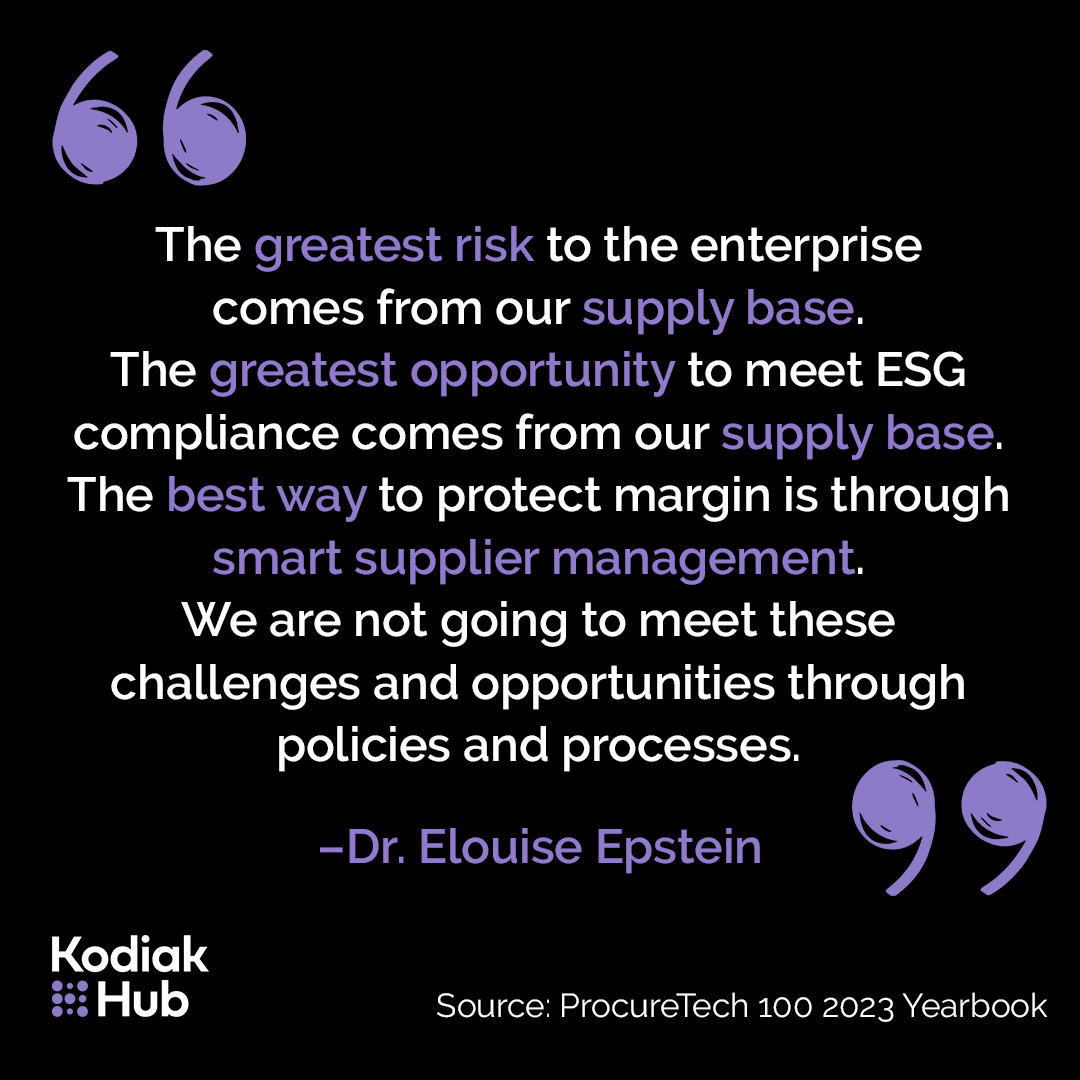
Luckily, innovative new SRM solutions like Kodiak Hub are here to help, and 2024 will likely be a year where we see increased adoption of these powerful tools. But one thing is for certain: the nature of the Buyer-Seller relationship has changed, and improved collaboration and the forging of strategic partnerships are essential for businesses to improve resilience in an unpredictable world, comply with new ESG regulations, drive sustainable innovation, and unlock top-line value.
10) Legislation
Another trend of the past few years that remains relevant in 2024 is legislation, as Procurement continues to adapt to new regulations that came into effect last year while preparing for more regulations that are expected to roll in during the coming years.
Here’s a quick overview of some of the latest legislative requirements that will continue to re-shape Procurement in 2024:
- Canada: Forced and Child Labour in Supply Chains Act
- Nordics (Norway): Transparency Act
- DACH (Germany): LkSG or Supply Chain Due Diligence Act
- EU: CSRD, CSDDD, and ESRS
- California: Climate Accountability Package
And though most of this legislation has been driven by European countries, the U.S. federal government is also expected to follow in the EU’s footsteps in the near future. Especially after the Biden administration has recently placed more importance on Procurement by created the first ever White House level Supply Chain Disruption Task Force.
While this wave of new legislation is an essential step to creating a more sustainable and responsible world, it nevertheless poses huge challenges for Procurement to adapt to. And, once again, underscores the importance of improved Supplier Relationship Management for businesses to improve the transparency and traceability of their global supply chains and collaborate with suppliers to drive sustainable transformation.
11) Geopolitics drives nearshoring, reshoring, & regionalization
After navigating the challenges of the COVID-19 pandemic, Procurement continues to face new disruptions driven by geopolitical conflicts. First, with the ongoing Russia-Ukraine war that began in early 2022. And more recently, with the Israel-Palestine conflict leading to disruptions in the Red Sea and Suez Canal, forcing global shipping containers to re-route around Africa with increased costs and delayed deliveries.
The increasing unpredictability of global supply chains has driven many businesses to begin nearshoring, reshoring, and/or regionalizing their supply chains to improve resilience against such disruptions. According to Forbes in the end of 2023, “50% of companies will have implemented more balanced multi-shoring sourcing strategies to better address risk.” And McKinsey’s 2023 Supply Chain Pulse Survey found that “Almost two-thirds (64%) of respondents [say] that they are currently regionalizations their supply chains, up from 44% [in 2022].”
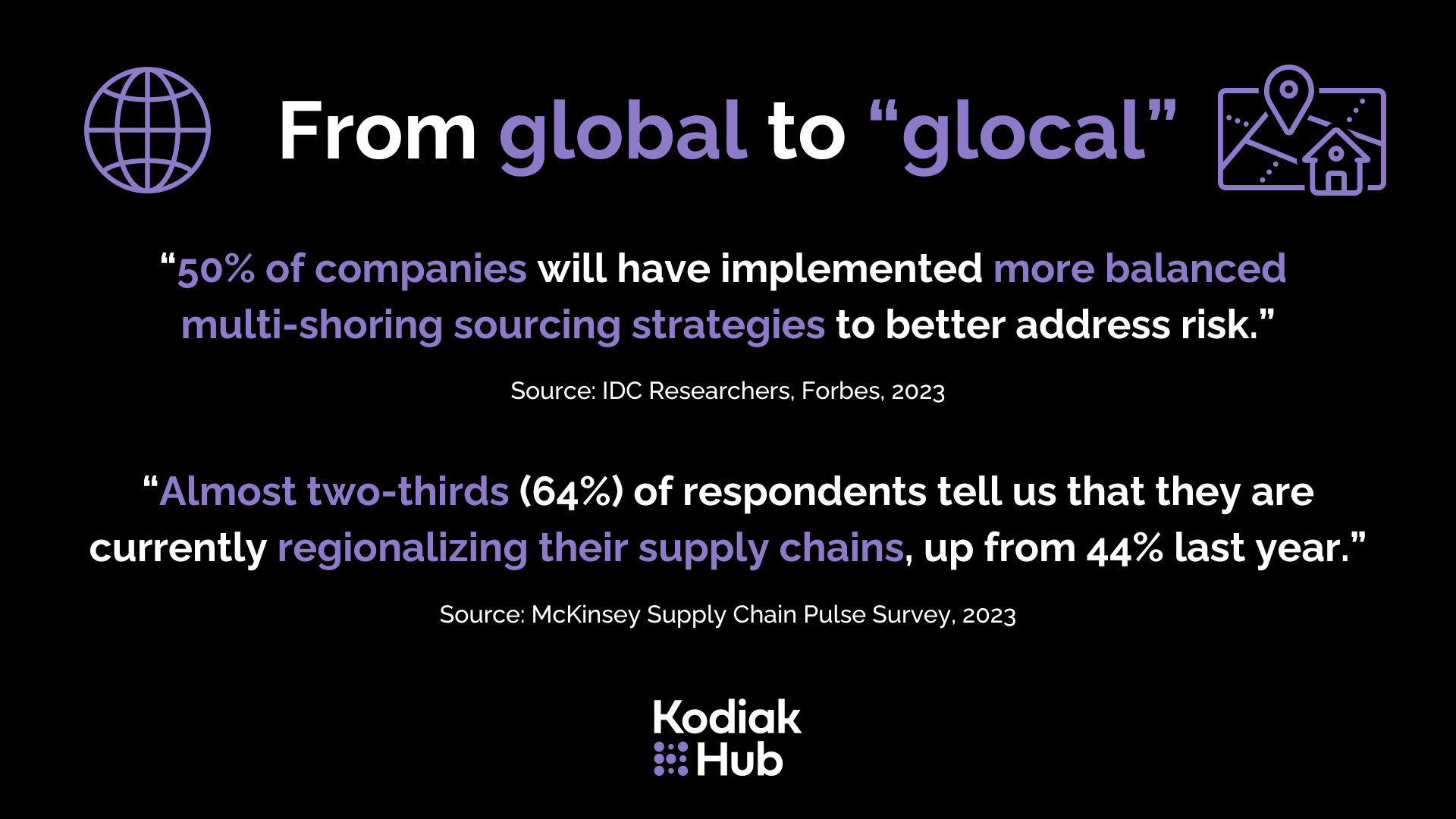
While this trend may improve the resilience of global trade in the face of disruptions, it’s a massive undertaking for Procurement teams to restructure their complex global supply chains. And a costly one, with companies like GSK and Boehringer Ingelheim investing €200 million and €120 million, respectively, in Re/Nearshoring initiatives (Supply Chain Digital, 2023).
And, of course, this trend will require strong Supplier Relationship Management for businesses to develop these re-imagined supply bases and new supplier relationships that meet their standards.
12) Circular supply chains
In the quest for sustainability, we can also expect more businesses to develop circular supply chains and design net-zero products in 2024 and beyond. Last fall, Apple announced that their AppleWatch would now be made out of 100% recycled/recyclable materials, along with ambitious targets to make more of their products carbon-neutral in the coming years. And BMW has also revealed a new iVision Circular concept car that is completely recycled/recyclable, with plans to bring this sustainable vehicle to market by 2040.
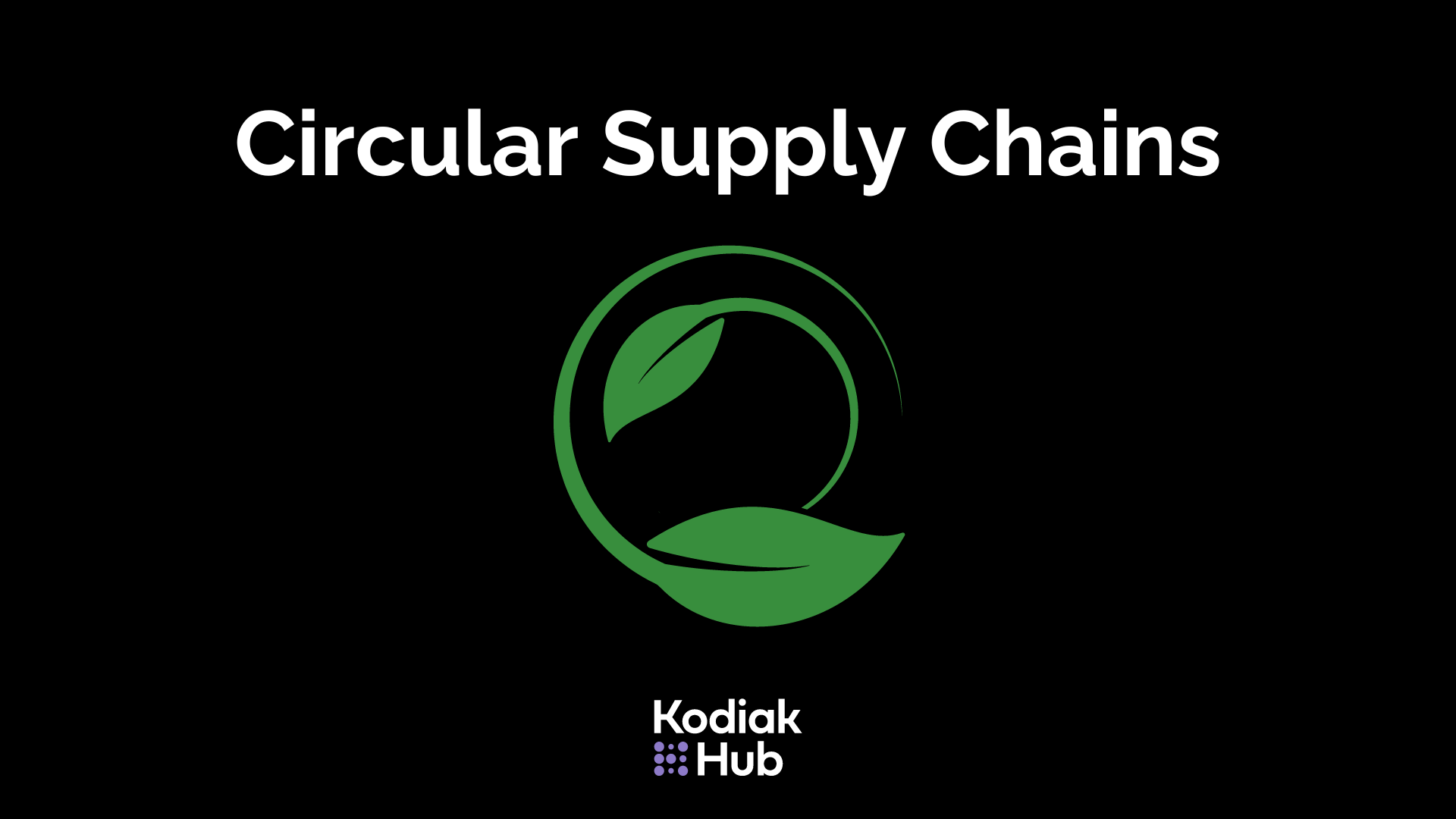
But beyond creating circular products, businesses need to continue exploring new ways to reduce waste and drive carbon-neutrality throughout their entire value chain. For instance, Kodiak Hub was thrilled to learn that one of our clients had begun to recycle the industrial bags used to transport their raw materials, sending them back to suppliers to be re-used and reduce waste. With improved Supplier Relationships, Procurement teams can collaborate and innovate with their best suppliers to craft more circular supply chains and imagine new solutions that drive carbon-neutrality.
13) Cybersecurity
“With great technological innovation comes great exposure to cyber risk.”
While the ongoing digital transformation of Procurement is exciting and hugely encouraging, we must also acknowledge the new challenges that it presents. According to BCI’s Supply Chain Resilience Survey, “Cyber security and data breaches are the top threat to supply chains over the next 12 months and the next five years.” And last year, Cybersecurity Ventures reported that “cybercrime is projected to cost $10.5 trillion in damages by 2025.”
As Procurement continues to adopt new technologies, it’s essential to practice good Governance while doing so. Here’s a few easy ways to address ProcureTech cybersecurity risk:
- Involve your Risk, Compliance, and IT Teams early in the Tech sourcing process, with comprehensive IT & Cybersecurity Assessments
- Ensure accreditation of your ProcureTech suppliers (ISO 27001, SOC2, etc.)
- Ask for 3rd Party Pen Tests and ensure frequency of such tests
- Dig into Procedures (Incidents Management, Vulnerabilities, etc.)
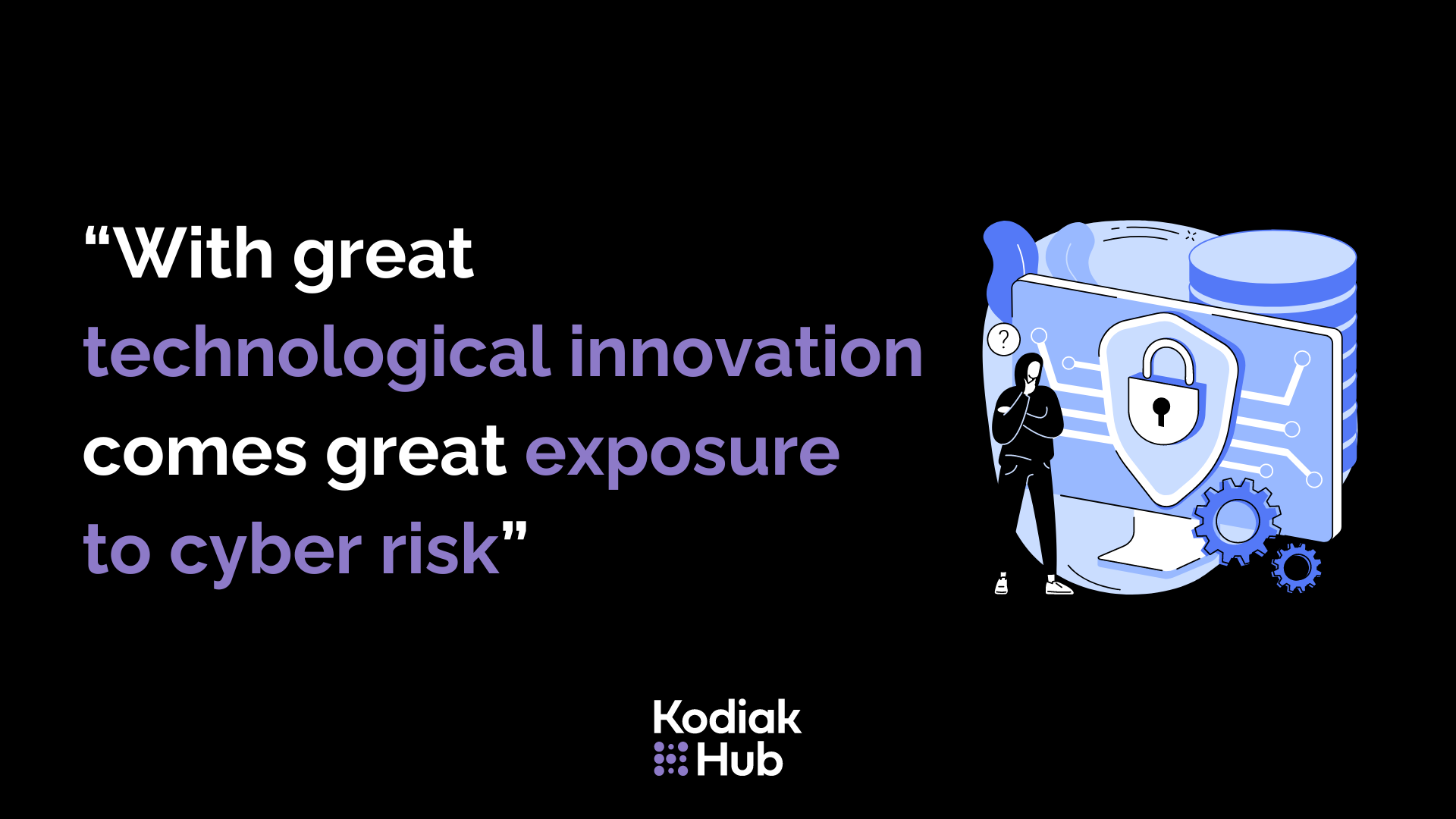
As a pioneering ProcureTech provider, Kodiak Hub is committed to ensuring the cybersecurity of our SRM solutions as we empower our partners in their digital transformation journeys.
Onwards into 2024 & beyond...
So there you have it – the 13 popular trends that we believe will shape Procurement this year. Only time will tell how these predictions will play out, especially in these increasingly unpredictable times. But we're as confident as we can be that these opportunities and challenges should be at the top of every Procurement team's agenda during 2024.
And of course, we can't help but mention how Kodiak Hub's innovative Supplier Relationship Management solutions can help you and your team navigate these challenges and opportunities to drive Predictability, Performance, and Purpose in your global supply chain.
So if you're looking to make 2024 a year of transformational change, sustainable impact, and strategic partnerships that unlock top-line value, reach out and we'd be happy to show you what Kodiak Hub can do for you and your team :)





